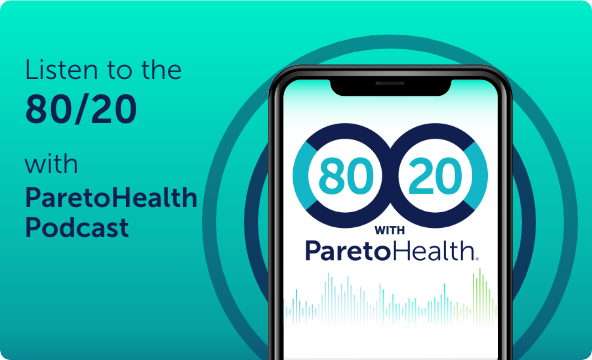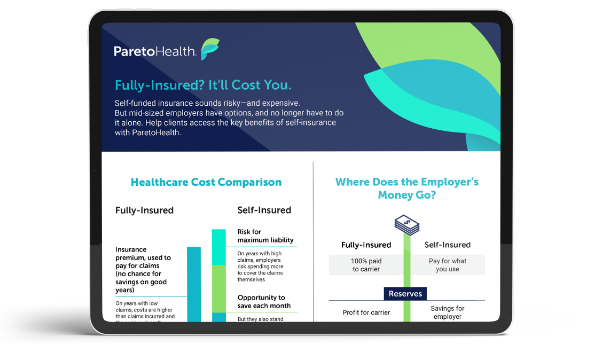Stop-loss insurance: All you need to know
Here’s what you need to know about stop-loss insurance and how it works with your health plan.
Most employers who can self-insure their health benefits do exactly that, and the reasoning is simple.
Self-insurance affords the tools and flexibility to contain their costs. Unlike the fully-insured model, where employers pay a premium for coverage, regardless of whether claims materialize, the self-insured employer pays only for claims that occur. Ordinary and expected claims result in predictable costs. But what happens when an employee has an unexpected, catastrophic claim?
How can a small employer possibly afford that?
Stop-loss insurance, embodying the essence of its name, protects self-funded employers against that very scenario. Stop loss coverage is a safety net, protecting against the volatility of unpredictable and costly claims.
While self-insurance gives employers greater control of their health spend than the traditional, fully insured model, it has its pros and cons. Here’s a quick refresher on how self-insurance works:
When an employer self-insures, they fund their employee health plans and claims directly. Not only does this mean they pay only for claims incurred, but it offers the additional advantage that they know exactly where each dollar is going. This transparency helps employers save money and avoid unnecessary spending.
The downside is that the pure self-insurance model doesn’t offer protection against unexpected high-frequency or high-cost claims.
If many small claims strike unexpectedly (think of a nasty flu season) or your plan is hit with a high-cost claim (such as cancer or kidney disease), you might be in for some costly trouble. It’s especially risky if your business doesn’t have sufficient liquid funds to cover those claims.
This is where stop-loss insurance comes to the rescue.
Stop-loss insurance covers all claims costs after a certain threshold. There are two types of stop-loss coverage:
1) Specific stop-loss covers the high cost of ongoing and catastrophic loss for specific individuals (i.e., the cancer or kidney disease example).
2) Aggregate stop-loss that covers the battery of unexpected small claims (i.e., the scenario of the nasty flu season).
A great way to understand self-insuring with stop-loss is to compare it to the car insurance model. You would probably never buy car insurance for your gas and oil changes since those are small, predictable expenses that you can fund more efficiently on your own. Similarly, stop-loss insurance allows you to follow that strategy for your healthcare—you pay for your smaller, more predictable claims as they come, and you buy insurance coverage for those larger and more unpredictable expenses.
While stop-loss coverage offers significant protection to the self-insured employer, it’s important to note that not all coverage is equal.
Also, if you don’t select a reputable insurance carrier, you risk the carrier becoming defunct or defaulting on its obligations. If that happens, you could find yourself holding the bag. In other words, you pay for your coverage, but if they fail and go down, you’re on your own.
Stop-loss policies have widely varying terms, conditions, and limitations, even among reputable carriers. Among other things, you may also have to deal with a practice known as “lasering.”
If “lasering” is an unfamiliar term to you, we have a full article on it here, which you can read once you’re finished with this one.
So, while the self-insured model is often the better option for companies, the downsides that come with it can make or break your company. Navigating those risks can be tricky business.
So, now what?
Is there a solution that provides the best of both worlds?
That’s where we come in.
When you join ParetoHealth, you gain access to the strongest stop-loss structure available in the market and no new lasers. Employers in our program save money, enjoying the transparency and agility of a self-insured plan without the usual risk and volatility.
How do we provide these uniquely advantageous terms?
Let’s take a moment and examine a hypothetical situation that mirrors the real-world experience of many smaller employers.
In this situation, you have a stop-loss policy (without the extra protection provided by the captive) with a $50K specific deductible for which you pay $400K per year. One of your employees has a claim during this year for $1M that is likely to continue costing a lot of money next year (an ongoing claim). The stop-loss carrier pays out the claim, then, at renewal time, informs you that your premium is going to rise unless you accept a laser on the affected individual.
Incidentally, this is entirely according to the normal economic rules of insurance. Insurance fundamentally deals with unknown risks, which means that as soon as the risk becomes known, the carrier is no longer bound to accept the transfer of that risk. In simpler terms, you cannot buy fire insurance for a house that is currently on fire. Any carrier who sold such policies would find themselves out of business in short order.
The way that we at ParetoHealth get out of this seemingly insoluble bind is by treating all of our policy-holders as a single block, meaning that the consequences of the risk each employer faces are spread out over the entire group. You pay a little bit extra (a few percentage points on your stop-loss policy) during a good claims year while paying far less during a poor claims year. In the above example, the cost to your plan after a poor claims year could easily rise 100% or more, depending on the course of the illness that your employee is battling.
Incidentally, the portion of your healthcare plan that is represented by stop-loss premium is far less than your fully-insured premium would be. We estimate that, on average, stop-loss insurance makes up around 25% of total cost. This means that paying even 4% extra (a high estimate) in premium only equates to 1% more total cost. In exchange for this negligibly higher expenditure in good years, we offer a maximum policy renewal rate of 30% on stop-loss premium, which equates to around a 7-8% increase on a fully-insured policy. In addition, you will never have a new laser imposed on you while you stay in our captive.
There’s a Better Way to Do Employee Health Benefits
Join an upcoming webinar to learn how ParetoHealth turnkey employee health benefits solutions deliver the scale and resources mid-sized businesses need to self-insure with total confidence. By combining a captive model with comprehensive medical and pharmacy cost containment strategies, our members realize significant cost savings with multi-year protection.
 December 14, 2023
December 14, 2023 






